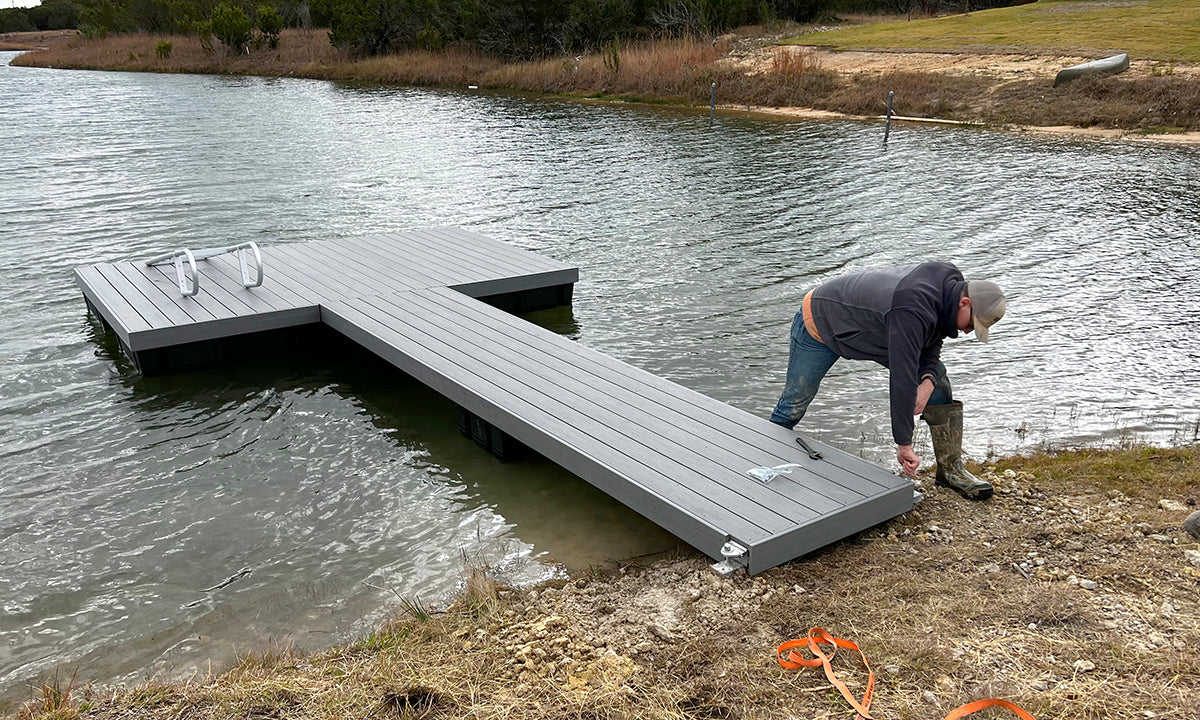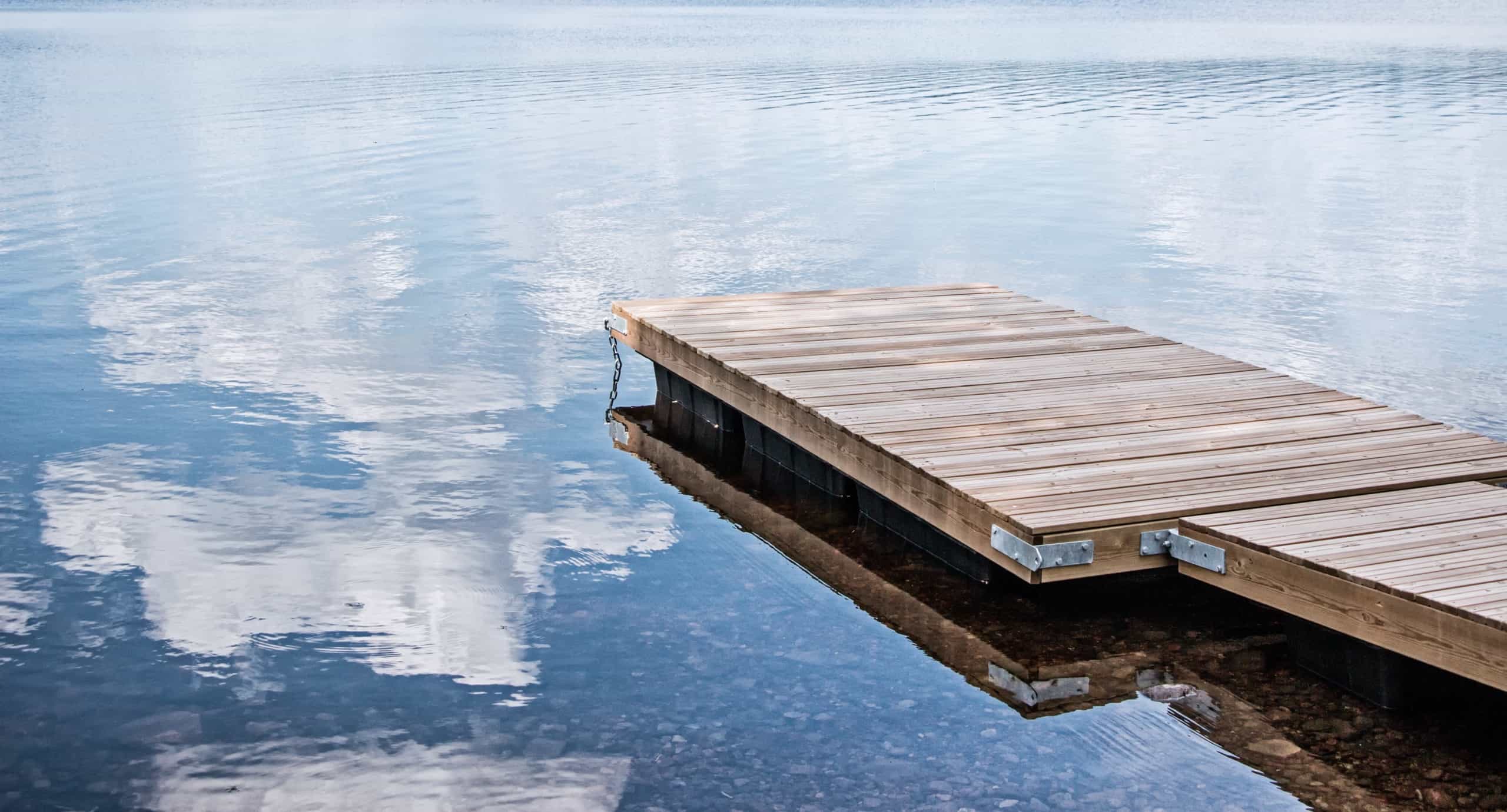Navigating the Options: Choosing the Right Dock Company for Your Floating Dock Task
Produce the Perfect Docking Option With Floating Docks
Floating docks present a versatile service for a variety of maritime requirements, adapting seamlessly to fluctuating water degrees and diverse vessel types. As we explore the important elements that add to the efficiency of floating docks, a number of vital variables pertaining to stability and upkeep will certainly emerge, elevating questions concerning how to maximize your docking experience.

Advantages of Floating Docks
Floating docks offer various advantages that make them an excellent selection for various maritime applications. Among the key benefits is their flexibility to changing water levels. Unlike repaired docks, floating docks increase and loss with the trend, making certain consistent accessibility for vessels. This feature is particularly essential in locations susceptible to considerable tidal fluctuations or seasonal water level adjustments.
Furthermore, floating docks are generally easier and quicker to mount contrasted to conventional set frameworks. Their modular design enables straightforward setting up and disassembly, assisting in maintenance and moving when needed. This flexibility is specifically useful for short-term applications or in environments where problems may transform.
Floating docks likewise tend to be a lot more environmentally pleasant, as they reduce disruption to the seabed and bordering aquatic ecological communities. Their buoyant nature reduces the danger of damages to marine life, promoting a much healthier atmosphere. These docks can be customized to suit numerous vessel dimensions, guaranteeing that they fulfill certain functional requirements.
Eventually, the combination of flexibility, simplicity of setup, and ecological considerations makes floating docks a highly reliable remedy for a vast array of maritime needs.
Choosing the Right Materials
Selecting the appropriate materials for floating docks is important to make sure toughness, security, and longevity. The choice of products straight influences the dock's performance in different environmental conditions, consisting of direct exposure to water, sunlight, and potential wear from marine web traffic.
Usual materials utilized for floating docks include aluminum, wood, and high-density polyethylene (HDPE) Aluminum is lightweight, corrosion-resistant, and requires very little upkeep, making it an exceptional selection for longevity. However, its initial price can be higher compared to other products.
Wood, while visually appealing and providing a traditional look, can be prone to rot and pest damage if not properly treated. Therefore, using pressure-treated timber or naturally long lasting species like cedar or redwood can reduce these concerns.
HDPE is a preferred choice because of its resistance to UV rays and chemicals, together with being environmentally friendly. floating docks. It is lightweight and readily available in various shades, permitting for customization
Ultimately, the best material selection will depend upon details demands, consisting of spending plan, desired looks, and ecological factors to consider. Cautious evaluation of these aspects will bring about a successful and durable floating dock solution.
Layout Factors To Consider for Stability
When designing floating docks, making certain stability is an essential element that can substantially impact their functionality and security. Stability in floating dock design is influenced by various aspects, including buoyancy, weight circulation, and the setup of components. An ideal buoyancy system need to use products that offer sufficient lift while decreasing weight. This equilibrium makes sure that the dock continues to be above water, even under differing tons.
Weight circulation is vital; uniformly distributing loads throughout the dock stops tilting and boosts security. Larger layouts can use enhanced stability, specifically in rough water problems, while longer docks may call for extra supports to avoid drooping.
One more key factor to consider is the environmental influence, consisting of wave action and wind. Incorporating attributes such as sidewalls or skirting can help minimize the impacts of ecological forces, keeping stability in damaging conditions. Inevitably, a mix of thoughtful layout, product choice, and understanding of environmental aspects will certainly produce a floating dock that meets both stability and security demands.
Setup Tips and Strategies

Following, secure the necessary permits and adhere to local regulations, which might determine setup techniques and ecological considerations. If required, involve a certified professional experienced in floating dock installments. Usage top notch materials designed for aquatic atmospheres to enhance resilience and longevity.
When placing the dock, align it parallel to the coastline to assist in easy access. Make certain that the anchoring system is durable, using cinder block or helical anchors to support the dock against wind and wave activity. It's vital to account for seasonal water degree changes, including prospective ice movement in cooler climates.
Throughout the installation, ascertain the dock's floatation and stability prior to completing the anchoring. Frequently inspect the setup for any indications of wear or damage. By complying with these methods and suggestions, you can achieve a safe, useful, and aesthetically pleasing floating dock installment that meets your demands.
Upkeep and Treatment Guidelines
Caring and preserving for floating docks is crucial to extending their life expectancy and making certain risk-free usage. Regular assessments must be performed to identify any signs of wear, damage, or marine growth. Search for fractures, loose fittings, or stained areas on the dock's surface, as these problems can jeopardize structural stability.
Cleaning up is necessary. Make use of a stress washing machine to he said get rid of algae, barnacles, and particles, which can accumulate with time. For persistent development, take into consideration eco-friendly cleaning agents that won't harm marine life.
In addition, examine the mooring lines and supports often to guarantee they are complimentary and safe from rust. Replace any frayed or damaged lines promptly to keep security.
During extreme climate, such as tornados or freezing conditions, take precautionary measures. Safeguard the official statement dock with extra mooring lines and, if possible, remove any kind of detachable components to prevent damages.
Final Thought
In verdict, the implementation of floating docks offers a versatile and reliable docking option suitable for different maritime applications. With appropriate installment and regular maintenance, floating docks can provide efficient and trusted docking experiences for a wide variety of vessels.
As we discover the essential aspects that add to the performance of floating docks, several crucial variables regarding stability and maintenance will emerge, increasing inquiries concerning how to maximize your docking experience. Unlike fixed docks, floating docks rise and fall with the tide, making sure constant access for vessels.When designing floating docks, making certain stability is a fundamental aspect that can considerably impact their performance and security. Stability in floating dock design is influenced by various factors, including buoyancy, weight distribution, and the arrangement of site here components. Ultimately, a combination of thoughtful layout, product option, and understanding of ecological variables will certainly produce a floating dock that satisfies both security and security needs.